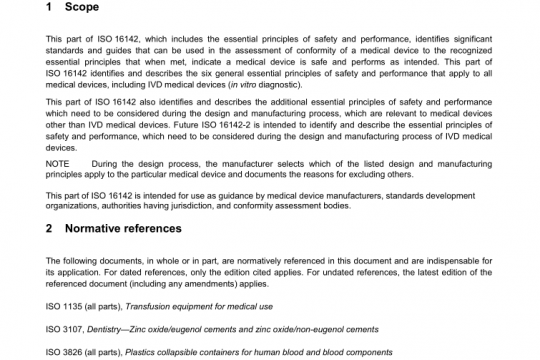AAMI ST42 pdf free download
AAMI ST42 pdf free download.Steam sterilization and sterility assurance using table-top sterilizers in office-based, ambulatory-care medical, surgical, and dental facilities.
2.3 biological indicator: Sterilization process monitoring device consisting of a standardized, viable population of microorganisms (usually bacterial spores) known to be resistant to the mode of sterilization being monitored. NOTE—Biological indicators are intended to demonstrate whether or not the conditions were adequate to achieve sterilization. A negative biological indicator does not prove that all items in the load are sterile or that they were all exposed to adequate sterilization conditions. 2.4 chemical indicator: Sterilization process monitoring device designed to respond with a characteristic chemical or physical change to one or more of the physical conditions within the sterilizing chamber. NOTE—Chemical indicators are intended to detect potential sterilization failures that could result from incorrect packaging, incorrect loading of the sterilizer, or malfunctions of the sterilizer. The “pass” response of a chemical indicator does not prove that the item accompanied by the indicator is sterile. 2.5 contaminated: State of having been actually or potentially in contact with microorganisms. NOTE—As used in health care, the term generally refers to microorganisms that could be capable of producing disease or infection. 2.6 decasing/breakout area or space: Unpacking area or space where products are removed from their external shipping containers prior to being taken into the preparation and packaging area or the sterile storage area. 2.7 decontamination: According to the Occupational Safety and Health Administration (OSHA), “the use of physical or chemical means to remove, inactivate, or destroy bloodborne pathogens on a surface or item to the point where they are no longer capable of transmitting infectious particles and the surface or item is rendered safe for handling, use, or disposal” [29 CFR 1 91 0.1 030].NOTE—The term is generally used in health care facilities with reference to all pathogenic organisms, not just those transmitted by blood. 2.8 drying time (cycle): As used in relation to table-top steam sterilizers, the time that the sterilizer door is left ajar to complete the drying of sterilized items. 2.9 exposure time: Period of time during a sterilization process in which items are exposed to the sterilant at the specified sterilization parameters. NOTE—In a steam sterilization process, exposure time is the period during which items are exposed to saturated steam at the specified temperature. 2.10 housekeeping equipment storage area or space: Area or space where housekeeping items are stored. 2.11 microbicidal process: As used in relation to decontamination, a process designed to provide some level of microbial lethality (kill). NOTE—Depending on the level of decontamination needed, this process may be a disinfection process or a sterilization process. The type and level of microbial kill achieved depends on such factors as the type and population of microorganisms present, the type of antimicrobial agent, the concentration of the antimicrobial agent, the exposure time, and the exposure temperature. When used for decontamination purposes, a microbicidal process does not necessarily yield an item that is safe for patient use. 2.12 office-based health care facility: Health care facility designed for short-term treatment of ambulatory patients, e.g., free-standing surgical centers, clinics, and medical and dental offices.AAMI ST42 pdf download.
Other IEC Standards
-

ANSI AAMI ISO 16142-1 pdf free download – non-IVD medical devices and guidance on the selection of standards
AAMI standards list DOWNLOAD -

ANSI AAMI ISO 16142-2 pdf free download – General essential principles and additional specifc essential principles
AAMI standards list DOWNLOAD


